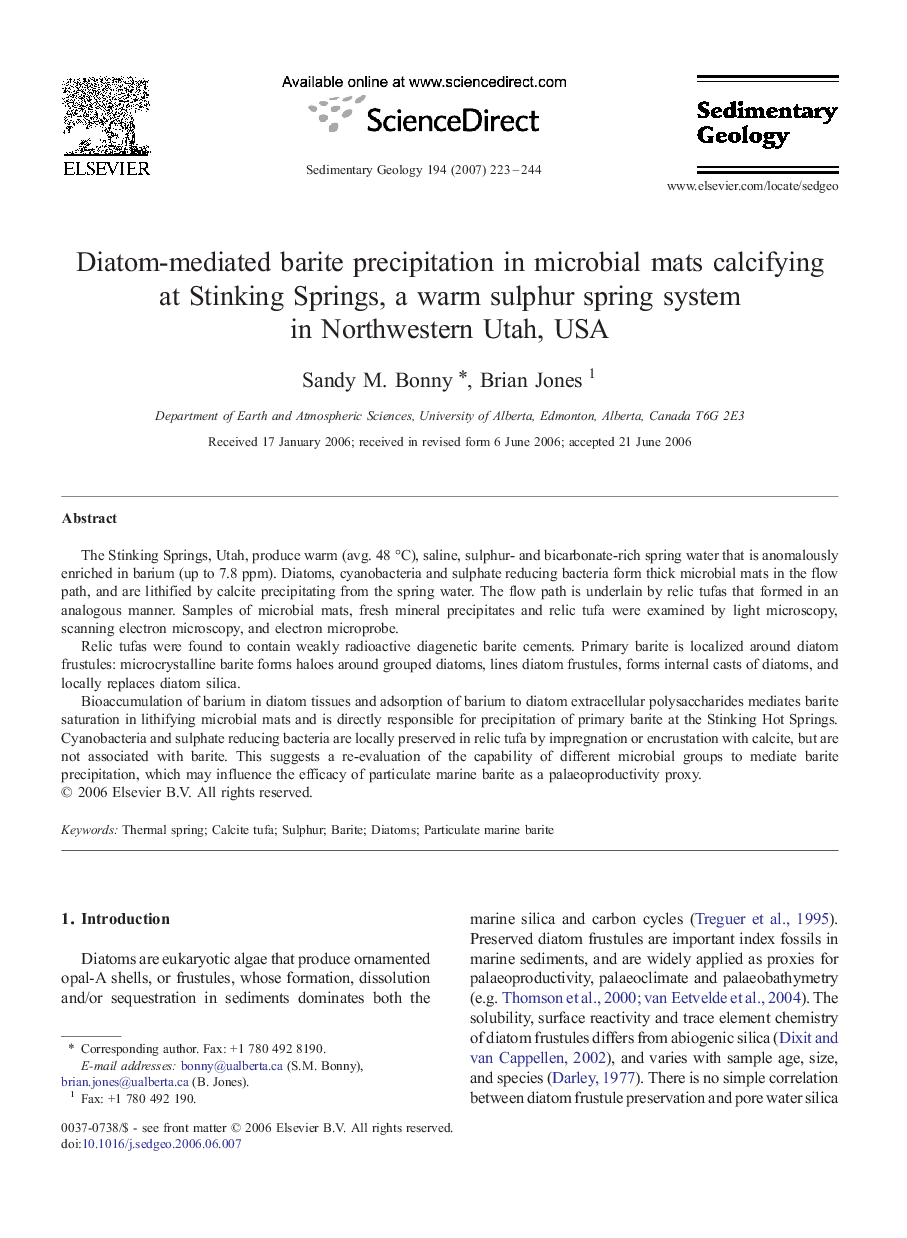| Article ID | Journal | Published Year | Pages | File Type |
|---|---|---|---|---|
| 4691001 | Sedimentary Geology | 2007 | 22 Pages |
The Stinking Springs, Utah, produce warm (avg. 48 °C), saline, sulphur- and bicarbonate-rich spring water that is anomalously enriched in barium (up to 7.8 ppm). Diatoms, cyanobacteria and sulphate reducing bacteria form thick microbial mats in the flow path, and are lithified by calcite precipitating from the spring water. The flow path is underlain by relic tufas that formed in an analogous manner. Samples of microbial mats, fresh mineral precipitates and relic tufa were examined by light microscopy, scanning electron microscopy, and electron microprobe.Relic tufas were found to contain weakly radioactive diagenetic barite cements. Primary barite is localized around diatom frustules: microcrystalline barite forms haloes around grouped diatoms, lines diatom frustules, forms internal casts of diatoms, and locally replaces diatom silica.Bioaccumulation of barium in diatom tissues and adsorption of barium to diatom extracellular polysaccharides mediates barite saturation in lithifying microbial mats and is directly responsible for precipitation of primary barite at the Stinking Hot Springs. Cyanobacteria and sulphate reducing bacteria are locally preserved in relic tufa by impregnation or encrustation with calcite, but are not associated with barite. This suggests a re-evaluation of the capability of different microbial groups to mediate barite precipitation, which may influence the efficacy of particulate marine barite as a palaeoproductivity proxy.
